제 글을 읽어보신 분들은 아시겠지만 저는 2차 세계대전에 더 관심이 많습니다. 전체 기간은 우리에게 역사상 가장 흥미로운 이야기를 제공합니다.
그것은 인류의 최악의 모습과 동시에 최고의 모습도 보여줍니다.
제2차 세계 대전은 많은 흥미로운 인물들과 마찬가지로 우리에게도 많은 흥미로운 이야기를 안겨주었습니다.
오늘 기사의 초점은 일본 제국 육군 정보대 소속 오노다 히로오 중위의 이야기입니다.
임무 개요 및 배포
임무 개요 및 배포
1922년에 태어난 오노다 히로오는 18세까지 조용한 삶을 살았고, 그곳에서 일본 제국 육군 보병에 입대했으며, 나카노 학교의 특공대 “후타마타”에서 정보 장교로 훈련을 받았습니다.
여기서 그는 게릴라전과 정보 수집을 배웠습니다.
1944년 12월 26일, 히루는 활주로와 항구 부두를 파괴하는 등 섬에 대한 적의 공격을 방해하라는 명령을 받고 필리핀 루방 섬으로 파견되었습니다.
오노다의 지휘관 다니구치 요시미 소령은 그에게 땅에서 살라는 명령을 내리고 항복하거나 스스로 죽는 것을 금지했습니다.
그는 “3년이 걸릴 수도 있고, 5년이 걸릴 수도 있지만, 무슨 일이 있어도 우리는 여러분을 위해 돌아올 것입니다. 그때까지는 당신이 단 한 명의 병사라도 있는 한 계속해서 그들을 이끌어야 합니다.”
오노다(Onoda)는 루방(Lubang) 섬에 상륙하여 이전에 다른 임무로 그곳으로 파견되었던 일단의 일본군과 연결되었습니다.
이 군인 집단의 장교들은 오노다보다 지위가 높았기 때문에 그가 임무를 수행하는 것을 허락하지 않았습니다.
부두와 활주로가 아직 손상되지 않았기 때문에 미국과 필리핀 영연방군 합동 기동 부대는 1945년 2월 말에 쉽게 섬에 상륙하여 점령할 수 있었습니다.
연합군의 상륙이 있은 지 짧은 시간 내에 오노다와 다른 병사 3명을 제외한 모든 병사가 사망하거나 항복했습니다.
소그룹의 최고위 병사인 오노다(Onoda)는 그의 분대에게 언덕으로 도망치라고 명령했습니다.
임무는 전쟁이 끝나면서 시작됩니다
임무는 전쟁이 끝나면서 시작됩니다
일본 주력군이 패한 후 오노다와 그의 세 사람은 게릴라전을 벌였으며 여러 차례 지역 경찰과 총격전을 벌였습니다.
1945년 10월, 오노다와 그의 팀은 일본이 항복했다는 전단지를 보았습니다.
나중에 소 한 마리를 잡아 먹은 뒤 섬 주민들이 남긴 전단지를 발견했는데, 여기에는 ‘8월 15일 전쟁은 끝났다. 산에서 내려와라!’라고 적혀 있었다.
그러나 오노다는 즉시 전단지를 불신했다.
Onoda와 그의 승무원은 전단지가 연합군을 속여 항복하도록 속이는 방법이어야 한다고 추론했습니다. Onoda는 그렇게 하지 말라고 엄격한 명령을 받았습니다.
그룹은 또한 경찰과의 지속적인 총격전이 전쟁이 여전히 진행 중이라는 증거라고 믿었습니다.
1945년 말, 제14방면군의 야마시타 도모유키 장군이 인쇄한 항복 명령과 함께 전단지가 루방 섬 전역에 공중 투하되었습니다.
일행은 1년 넘게 숨어 지내왔고, 전단지를 자세히 살펴본 결과 가짜라고 판단하고 항복하지 않기로 결정했습니다.
히로시마와 나가사키에 원자폭탄이 떨어졌다는 사실을 몰랐기 때문에 일본이 항복할 가능성은 거의 없다고 믿었던 것은 당연합니다.
장기간의 불신 캠페인
장기간의 불신 캠페인
1949년 오노다의 세 명 중 한 명인 아카츠 유이치 일병이 그룹을 떠나 6개월 후인 1950년에 필리핀군에 항복했습니다.
이로 인해 남은 세 명의 병사들은 더욱 조심스럽고 편집증에 빠졌습니다.
1952년에 항공기는 수색 범위를 확대하고 군인들에게 항복을 촉구하는 편지와 가족 사진을 공중에 투하했지만 다시 한번 세 명의 군인은 이것이 속임수라고 확신했습니다.
1953년 6월, 오노다의 부하 중 한 명인 시마다 쇼이치 상병은 변장한 적군으로 추정되는 현지 어부들과의 총격전 도중 다리에 총을 맞았지만 나중에 오노다에 의해 건강을 회복했습니다.
그러나 1954년 5월, 시마다는 잠재적인 구조대원에게 총격을 가한 후 수색대의 총에 맞아 사망했습니다.
오노다와 그의 남은 한 명인 코즈카 긴시치 이등병은 1972년까지 지역 주민들을 공포에 떨게 하는 캠페인을 계속했습니다.
1972년에 Kozuka는 더 이상 존재하지 않는 “적”과 동맹을 맺고 있다고 의심되는 농부의 쌀 비축물을 그와 Onoda가 태워 총에 맞아 사망했습니다.
용감한 모험가가 오노다의 전쟁을 종식시킵니다
용감한 모험가가 오노다의 전쟁을 종식시킵니다
이로 인해 일본 탐험가 노리오 스즈키(Norio Suzuki)가 오노다를 발견한 1974년까지 오노다가 임무를 수행하게 되었습니다. 스즈키는 “오노다 중위, 야생 판다, 혐오스러운 눈사람 순으로”를 찾아 세계를 여행하고 있었습니다.
너덜너덜한 일본 제국군 군복을 입은 전설적인 일본 군인을 찾은 후 두 사람은 친구가 되었습니다.
그러나 오노다는 여전히 항복을 거부했다.
그래서 스즈키는 오노다의 이야기를 직접 듣고 그의 전 사령관 다니구치 요시미 소령을 찾아냈다.
수십년전 약속을 이행한 전 소령
또는 Onoda의 명령을 직접 종료했습니다.
오노다는 일본 국기에 경의를 표한 후 소령에게 자신의 카타나, 여전히 작동하는 아리사카 99식 소총, 탄약 몇 발, 수류탄 몇 개, 가족용 단검을 건네주었습니다.
캠페인 기간 동안 30명이 넘는 무고한 사람들의 죽음에 책임이 있음에도 불구하고 오노다는 전쟁이 아직 계속되고 있다고 믿었기 때문에 필리핀 정부로부터 공식 사면을 받았습니다.
다른 나라로 돌아가는 중
다른 나라로 돌아가는 중
일본으로 돌아온 오노다는 하룻밤 사이에 유명인사가 되었습니다.
그러나 그는 수년 전에 떠났던 나라와는 크게 다른 나라에서의 생활에 적응하는 것이 매우 어렵다는 것을 알았습니다.
그는 1975년에 자서전을 집필하고 출판한 후 일본을 떠나 브라질로 가서 그곳에서 가축 사육자가 되었고 나중에 일본에 일련의 생존 훈련 학교를 열었습니다.
오노다 히로오는 말년 인터뷰에서 이렇게 말했습니다.
“모든 일본군은 죽음을 준비했습니다. 그런데 정보장교로서 게릴라전을 하라는 명령을 받았고, 죽지 말라는 명령을 받았습니다. 나는 장교가 되었고, 명령을 받았습니다. 그것을 실천하지 못한다면 부끄러움을 느낄 것입니다. 나는 매우 경쟁력이 있습니다.”
오노다 히로오는 2010년 91세의 나이로 평화롭게 세상을 떠났습니다.
A Japanese Soldier Took 29 Years to Surrender After WWII
As those of you who read my articles may know, I’m rather interested in World War II. The whole period of time offers us some of history’s most fascinating stories.
It showcases mankind at its worst, but also at its best.
World War II gave us many interesting stories just as it did many interesting characters.
The focus of today’s article is the story of one Lieutenant Hiroo Onoda of the Imperial Japanese Army Intelligence Corps.
Mission Brief and Deployment
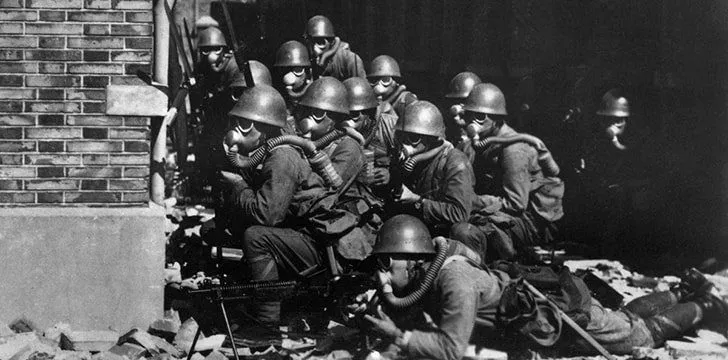
Born in 1922, Hiroo Onoda lived a quiet life until the age of 18, where he joined the Imperial Japanese Army Infantry, going on to train as an intelligence officer in the commando class “futamata” of the Nakano School.
Here he learned guerrilla warfare and intelligence gathering.
On December 26, 1944, Hiroo was sent to Lubang Island in the Philippines with orders to hamper enemy attacks on the island, including destroying the airstrip and the harbor’s pier.
Onoda’s Commanding Officer, Major Yoshimi Taniguchi, had given him orders to live off the land and forbade him to surrender or die by his own hand.
He said “It may take three years, it may take five, but whatever happens, we’ll come back for you. Until then, so long as you have one soldier, you are to continue to lead them.”
Onoda landed on the Lubang Island and linked up with a group of Japanese soldiers previously sent there on a different mission.
The officers in this group of soldiers outranked Onoda, so they denied him permission to carry out his mission.
As a result of the pier and airstrip still being intact, the joint task force of American and Philippine Commonwealth forces was easily able to land on the island and take it in late February 1945.
Within a short time period of the Allied landings, all but Onoda and three other soldiers had died or surrendered.
As the highest-ranking soldier in the small group, Onoda ordered his squad to flee into the hills.
The Mission Begins as the War Ends
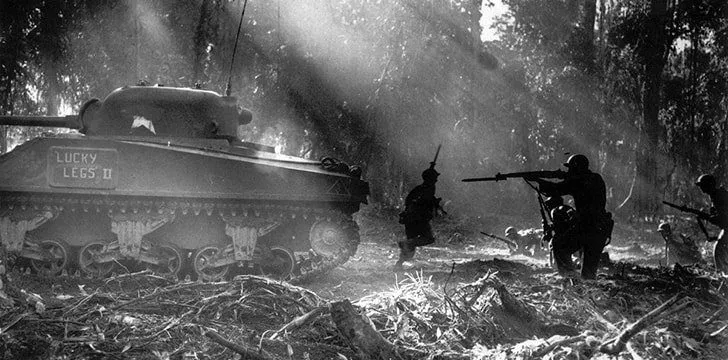
After the defeat of the main Japanese forces, Onoda and his three men carried out a guerrilla warfare campaign, engaging with shootouts with local police on several occasions.
In October 1945, Onoda and his squad saw a leaflet announcing that Japan had surrendered.
Later on, after they had killed a cow to eat, they found a leaflet left behind by islanders that said “The war ended on August 15. Come down from the mountains!”
However, Onoda distrusted the leaflet instantly.
Onoda and his crew deduced the leaflet had to be Allied propaganda, a way to trick them into surrendering – something Onoda was under strict orders not to do.
The group also believed their continued shootouts with police were proof the war was still ongoing.
In late 1945, leaflets were airdropped all over Lubang Island with a surrender order printed from General Tomoyuki Yamashita of the Fourteenth Area Army.
The group had been hiding for over a year now, and after examining the leaflet closely they decided it was a fake and chose not to surrender.
Not knowing about the atomic bombs dropped on Hiroshima and Nagasaki, the group rightly so believed it very unlikely that Japan would surrender.
A Lengthy Campaign of Mistrust
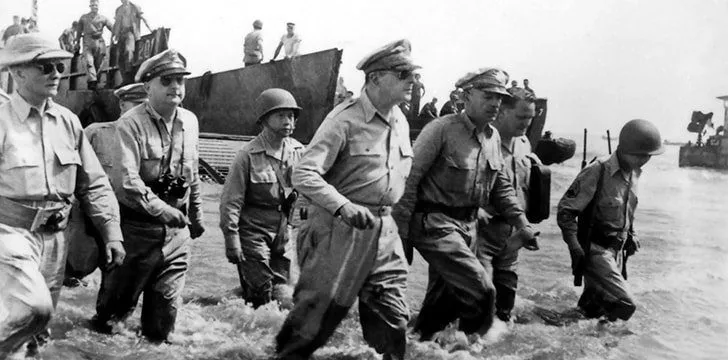
In 1949, one of Onoda’s three men, Private Yuichi Akatsu, left the group and surrendered to Filipino forces six months later in 1950.
This caused the three remaining soldiers to become even more cautious and paranoid.
In 1952, aircraft widened the search parameters, air-dropping letters and family pictures urging the soldiers to surrender, but once again the three soldiers were convinced this was a trick.
In June of 1953, one of Onoda’s men, Corporal Shoichi Shimada was shot in the leg during a shoot-out with local fishermen, whom he assumed were enemy soldiers in disguise, but was later nursed back to health by Onoda.
However, in May 1954, Shimada was shot and killed by a search party after he opened fire on his potential rescuers.
Onoda and his one remaining man, Private First Class Kinshichi Kozuka, carried on their campaign of terrorizing the locals up until 1972.
In 1972 Kozuka was shot and killed as he and Onoda burnt a rice stockpile belonging to a farmer they suspected of being in league with the “enemy” who no longer existed.
An Intrepid Adventurer Ends Onoda’s War
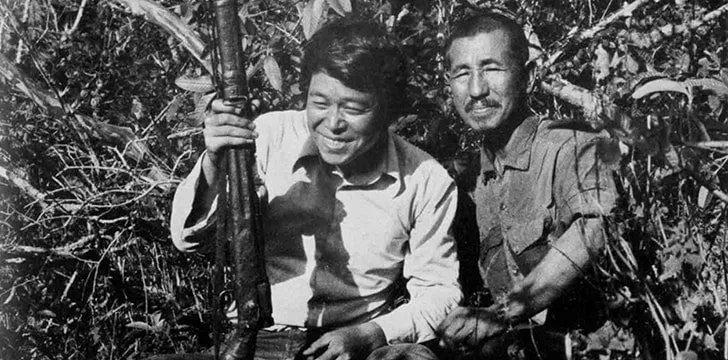
This left just Onoda carrying out his mission until 1974 when a Japanese explorer, Norio Suzuki, found Onoda. Suzuki had been traveling the world, searching for “Lieutenant Onoda, a wild panda, and the Abominable Snowman, in that order.”
After locating the fabled Japanese soldier, clad in the tattered rags of his Imperial Japanese Army uniform, the two became friends.
However, Onoda still refused to surrender.
So Suzuki, having heard Onoda’s story from the man himself, located his former Commanding Officer, Major Yoshimi Taniguchi.
Fulfilling his promise from decades ago, the former Major ended Onoda’s orders in person.
Onoda saluted the Japanese flag, then handed the Major his katana, his still-functioning Arisaka Type 99 rifle, several rounds of ammo, some hand grenades and his family dagger.
Despite being responsible for the deaths of over 30 innocent people during his campaign, Onoda was granted an official pardon by the Filipino government as he believed the war was still going on.
Going Home to A Different Country
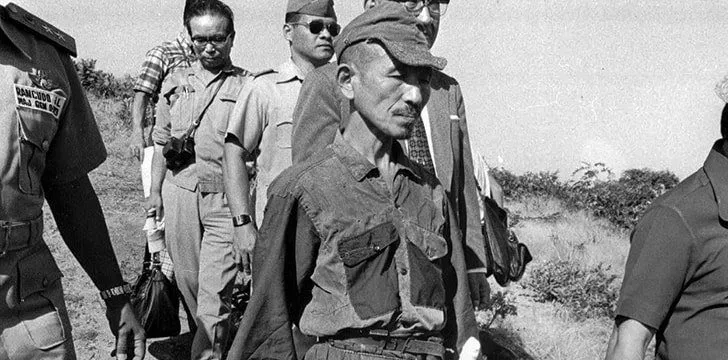
Upon returning back to Japan, Onoda was an overnight celebrity.
However, he found it very hard to adjust to life in a country vastly different from the one he had left all those years ago.
He wrote and published an autobiography in 1975, before leaving Japan for Brazil where he became a cattle farmer and later opened up a series of survival training schools in Japan.
In an interview near the end of his life, Hiroo Onoda said:
“Every Japanese soldier was prepared for death. But as an Intelligence Officer, I was ordered to conduct guerrilla warfare and not to die. I became an officer, and I received an order. If I could not carry it out, I would feel shame. I am very competitive.”
Hiroo Onoda passed away peacefully in 2010, aged 91










